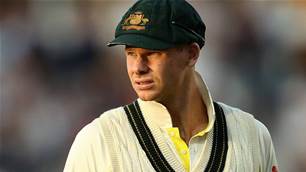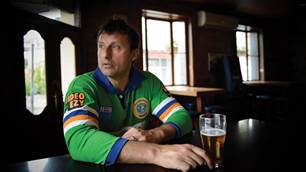Is Stuart Gibson the fittest man in Australia?
 Stuart Gibson Portrait
Stuart Gibson PortraitImages: Joseph Feil
Happy feet
“I tend to mix and match my running shoes – they’re on a bit of a rotation – but I’ll still go through eight pairs a year. You’ve basically got three types of shoe: your general road-running shoe, your intermediate trail-running shoe and then your hard-core trail-running shoe. These heavy shoes have a very aggressive sole on them, almost like rubbery football studs. It depends on the course as to what footwear you go with. The Bogong to Hotham race is probably considered the hardest in Australia; it’s all technical single track. For that race I’d choose a very aggressive trail shoe. But a lot of other races, the North Face 100 for example, are a mix of fire trails and single track, so for those events I use an average trail shoe with a much more refined sole. You have to do your homework on a course before deciding what to wear.”
Just relax
“I’ve got a middle-distance background. Ten years ago I was at university in the UK and I used to run competitive middle-distance races, so I was always honing my track technique. But the technique for ultra-running is all about conserving energy. It’s about staying really relaxed, remaining as efficient as possible. Your knee lift is very low, your stride is shortened, your arms are low, your shoulders aren’t tensed. You’re just looking at the ground and choosing your line. At points in a race, say the last ten kilometres, you might want to attack a hill. Then you increase your stride length, get a little more aggressive on your arm movement. But that happens very rarely in ultra-running because races are seldom down to sprint finishes – most of the time you tend to be out on your own.”
Going up
“The first year I did the Eureka Tower climb, it was a bit of a charity thing, but last year I took it a bit more seriously and started doing a few sharper sessions. Basically, I broke it down and said to myself, ‘I think I can climb this in eight minutes.’ Then I tried to break that eight-minute period down. So for the first three to four minutes I’m running hard, doing three to four stairs at a time. Then I cut that back to two stairs at a time, because my heart rate’s at its maximum. Then, for the last minute, I’m just trying to hold on. So I simulate that at the 1000 Steps at Ferntree Gully. I work in eight-minute blocks where I run really hard for four minutes at a longer stride, trying to build my lactic acid, putting my body in oxygen debt. Then I shorten my stride for another three minutes and try to buffer that lactic acid, to manage it, using my middle-distance background. Then for the last minute it’s all about controlling my style, holding my form, controlling my heart rate, because I’m working at my maximum. It’s not much fun!”
Related Articles

The Ultimate NRL 2020 Season Preview

December 2019 Inside Sport hits ‘em for six













